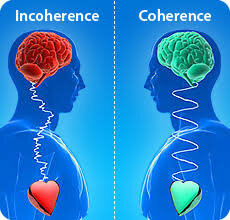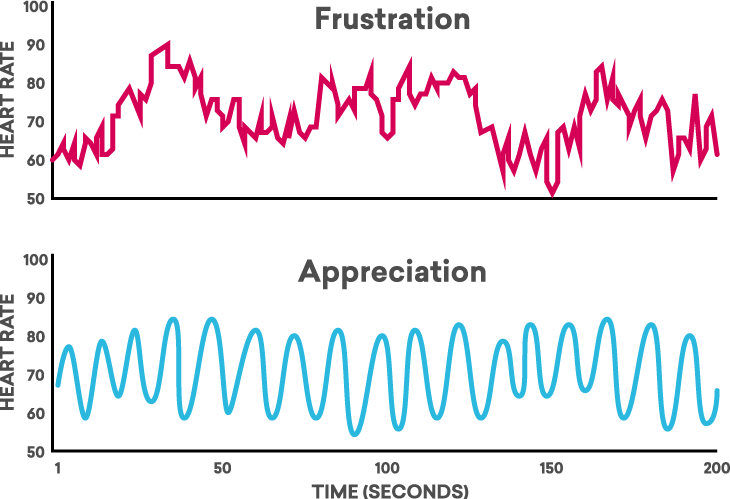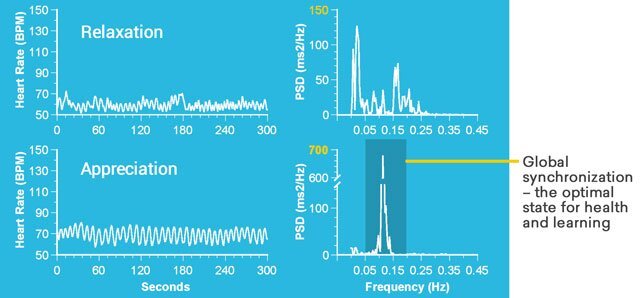Why do we see healthy people getting sick? How do people that exercise, eat well and seemingly do everything right still end up with disease? Isn’t exercise and eating healthy suppose to be enough to keep you living a long life? While it is a major factor in extending lives, our thoughts and emotions maybe undermining our efforts.
In my own life, I started to realize that exercise was not enough. I was still suffering from anxiety and couldn’t figure out why. After being introduced to Heart Math Institute, I finally found some answers that I am hoping to share with you in this article.
Anxiety and depression are on the rise due to changes in our social structure. It is vital to look at our emotions as a part of being healthy. Too many of us have been taught it is not appropriate to feel our emotions or have unprocessed trauma that lives in the body. The body can actually become addicted to feelings and if they are negative and chronic then it is time to make a change. I encourage this change by finding the connection between the our emotions and our health.

The heart and brain are connected, but did you know the brain is continuously receiving messages from the heart? A team of scientists led by J. Andrew Armour, M.D., Ph.D., of the University of Montreal, studied the relationship between the heart and brain. What they discovered was that there are about 40,000 neurons in the heart!! Scientists have nicknamed this the ‘little brain’ in your heart. This little brain inside our heart could be the very reason some stay healthy while others are sick. Our heart and brain work together to keep us healthy and happy.
Different patterns of the heart affect our brain and emotions. When we feel stressed, our heart rhythm pattern is irregular. This can cause people to think less-clearly than normal. The opposite of this is true when the heart sends coherent signals to the brain during positive emotions, it assists brain function and reinforces positive feelings. Learning to sustain positive emotions will increase heart rhythm coherence, and has a profound effect on the body as well as how we think and feel.
WOW! who would’ve thought? Feeling Good Mentally = Being Healthly Physically.
Science use to think when the heart was at rest it was like a metronome, but now we know that is not the case. A healthy heart has an irregular interval between heart beats which is called Heart Rate Variability (HRV). HRV measures beat to beat changes. The HRV is controlled by the autonomic nervous system (ANS). The autonomic nervous system has two branches known as sympathetic (stress response) which accelerates heart rate and parasympathetic (relaxation response) which slows it down. Together they work to maintain cardiovascular activity in balance. If you want a window to see what’s happening inside your body then look to your Heart Rate Variability.
The more I study HRV, the more I realize it’s importance in being healthy and feeling our best. Even physicians are claiming HRV to be an important indicator of health and a marker for how well we are aging! Low HRV is seen in individuals with a range of diseases. So bringing our heart and brain into balance can help restore HRV to healthy values!

So if Heart Rate Variability is so important for our health then what do we do about it?
Our thoughts, emotions and breathing patterns influence our autonomic nervous system and in turn our heart rate variability. Research done at Heart Math Institute shows that the most important factor is our feelings and emotions! The emotions that we experience daily affect our heart and in turn tells us how well our body is functioning. The Heart Math Institute has also shown that generating and sustaining positive emotions brings us into coherence which organizes our thoughts, emotions and breathing. By getting into a coherent state you will feel and perform your best.
How amazing is it to know that by cultivating an attitude of gratitude we can shift into coherence which has a plethora of benefits?!
Breathing is so important to get into a coherent state! If you are struggling to feel positive being by breathing slowly and rhythmically to bring your heart and brain into coherence.
Try breathing in for 5 seconds and breathing out for 5 seconds and maintaining this for a period of time. It takes mental effort but will bring you into coherence and shift you out of the stress response. More important than breathing is feeling positive. Positive emotions bring us into a state of coherence very fast without having to think about breathing. When we feel positive, our heart rhythm shifts which automatically synchronizes our breathing with the heart.
Important side note: coherence is different from relaxation. Coherence is activated by sustained positive emotions vs relaxation is about resting the mind and body.

Getting into coherence becomes easier and easier with practice. Begin to practice breathing a positive feeling or attitude through the heart area in order to enhance the experience.
This technique is extremely helpful in taking care of your well being in order to prevent disease from ever having a chance to spread. Some of us are committed to doing whatever it takes to feeling and being our best. I believe getting into a coherent state before starting the day, your workout or any activity is one of the best things you can do. If you find yourself getting out of coherence and into negative emotions then pause, breathe deep and cultivate an attitude of gratitude. Nothing is worth sacrificing your health and well-being for. Remember we have so much to be grateful for.
Below I have included a link to learn a quick coherence technique!
If you’re serious and dedicated to learning what it takes to be your healthiest self then it takes more than just exercising and eating right. It means managing your thoughts and emotions. Being able to feel appreciation for yourself and your life. If you struggle with anxiety, depression, or low-self esteem then working on just your physical well-being may not be enough. Because deep down you don’t love yourself for where you are now.
Whatever your goal or reason for wanting to be healthy, strong and feeling your best, I want you to know it is possible. I can help you get there. I can get you to where you want to go and then some in 3 months.
In my 12 week coaching program, Strength Training Yogis, you will accomplish not just physical training but reconditioning your mind and emotions. Physical training only get’s you half of the way. What you believe and feel about yourself is the other half.
In addition to all that, you’ll be held accountable.
The more people I work with online, the more I realize training is just a piece of it. An important piece of course, but just a piece.
It takes 3 pieces to guarantee success:
-
The proper physical training (which most get wrong anyway)
-
The proper mindset (learn to practice gratitude and stay in coherence)
-
Accountability.
That’s why Strength Training Yogis is different. We’ll do it together, step-by-step, piece-by-piece.
Whether you want to master your mind, emotions or just build a strong body, I can get you there. Yes, it’ll be hard, but if you show up committed, coachable, and resourceful there’s no limit to what we can accomplish together.
If you want support from start to finish and you’re ready to start taking action on your goals, transform your body then schedule a call to talk to me.
https://calendly.com/nchamberlaintraining
Yours in health,
Nicole
References:
1. Armour JA. Anatomy and function of the intrathoracic neurons regulating the mammalian heart. In: Zucker IH, Gilmore JP, eds. Reflex Control of the Circulation. Boca Raton, FL: CRC Press; 1991:1–37. 2. Armour JA,
“The Science of HeartMath.” HeartMath, 10 Sept. 2019, www.heartmath.com/science/.
Armour, Andrew J. The Little Brain on the Heart. fohs.bgu.ac.il/develop/DB2/Heart%20memory/Armour,%202007.pdf.

